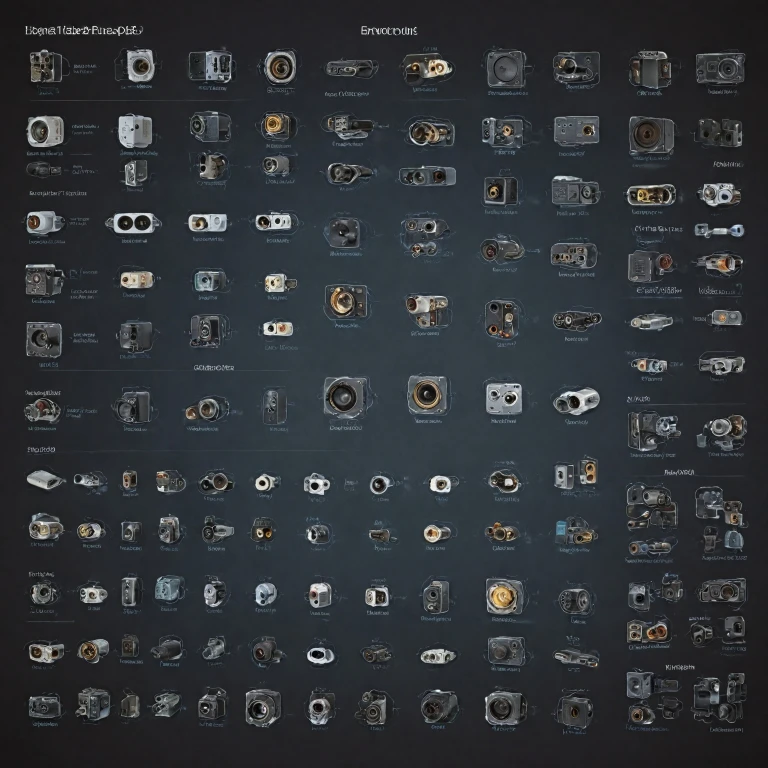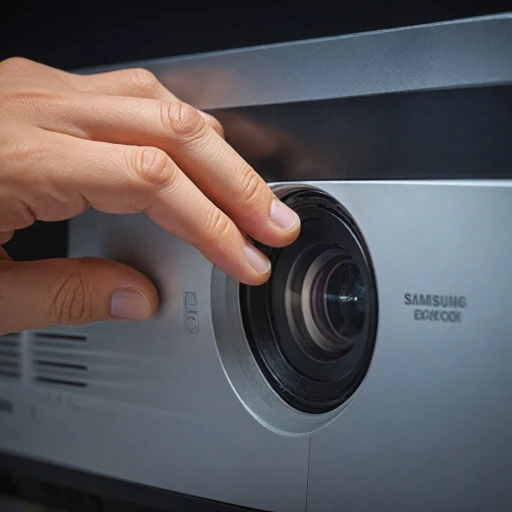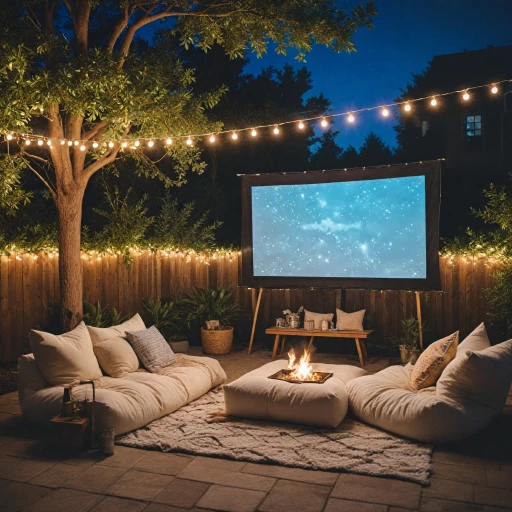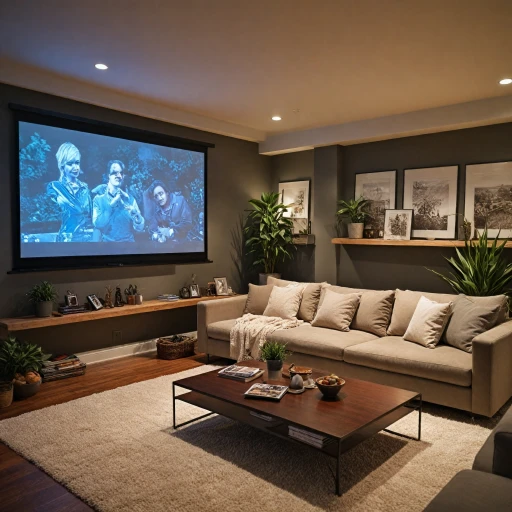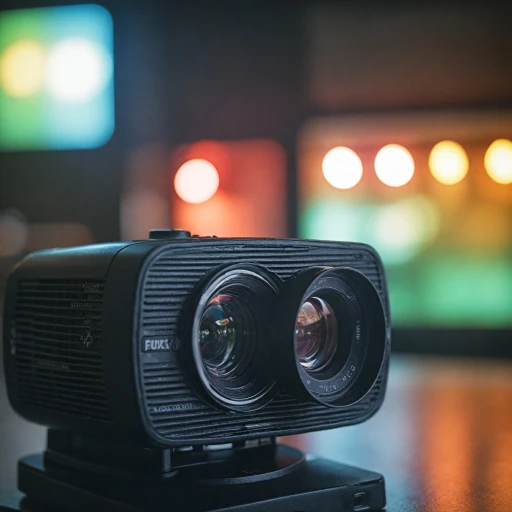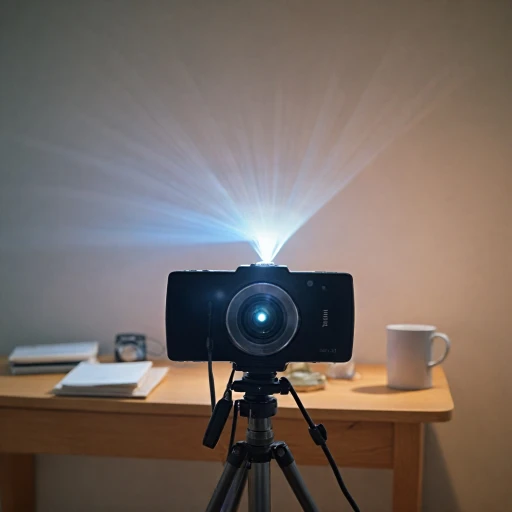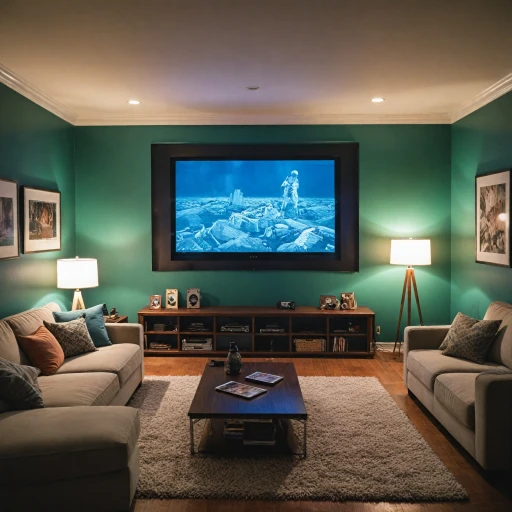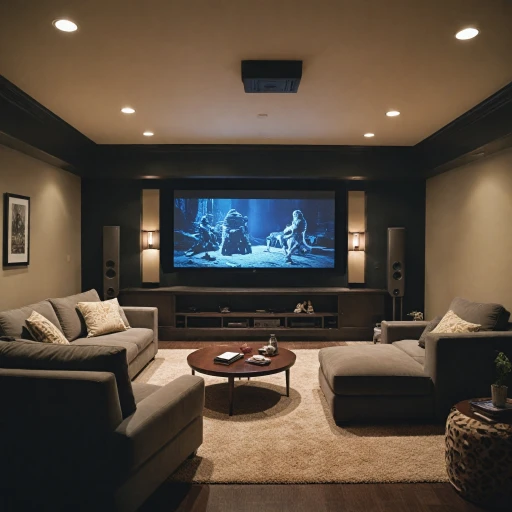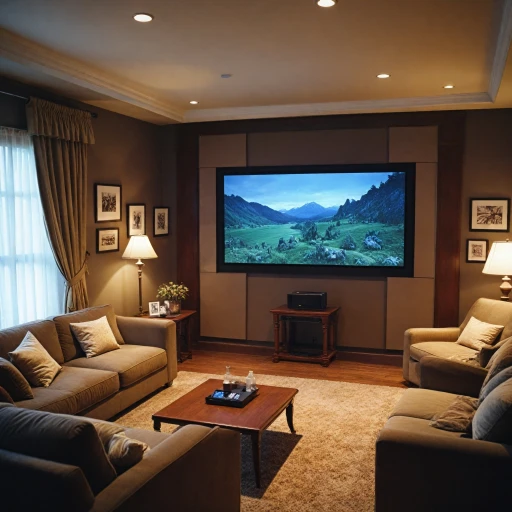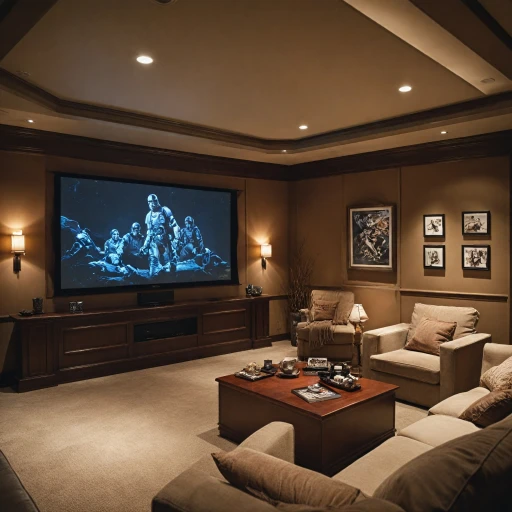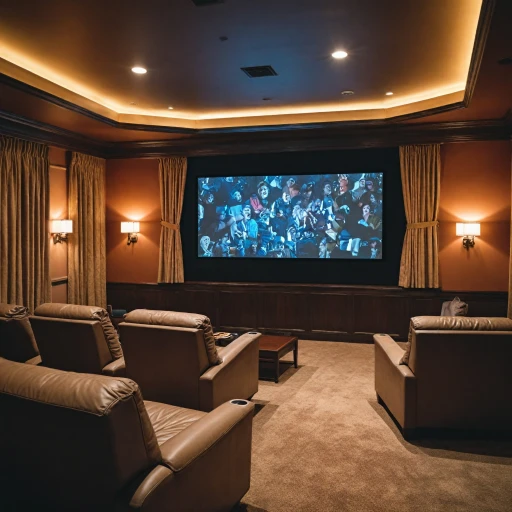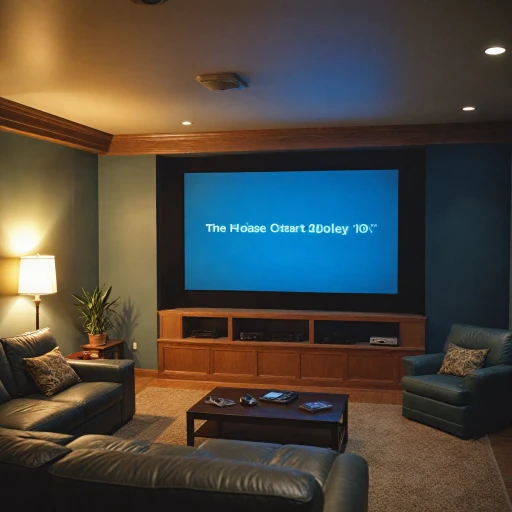
The Role of Speaker Connectors in Home Theater Projectors
Understanding Speaker Connectors and Their Importance
In the realm of home theater projectors, speaker connectors play a pivotal role in delivering superior audio quality and enhancing your overall viewing experience. These little components might seem insignificant at first glance, but they serve as the essential link between your projector's audio system and the speakers, ensuring that the sound is transmitted cleanly and effectively. When setting up your home theater, selecting the right speaker connectors can influence the audio output, and ultimately, your satisfaction with the setup. Speaker connectors are responsible for connecting the speaker wire to the audio system, and various types are available depending on your specific needs and equipment types. One common type is the banana plug, favored for its ease of use and robust connection. These connectors come in different colors, typically black and red, to indicate polarity. Banana plugs are especially popular among enthusiasts who frequently swap out equipment, as they save time and effort during installation. Moreover, binding post connectors are another reliable choice, providing a secure attachment with their threaded design, suitable for both banana plugs and bare wire connections. For more advanced setups, XLR connectors and speakon connectors are preferred due to their professional-grade quality and ability to handle high audio signal levels. Budget is another factor to consider. Prices can vary significantly depending on the quality and type of connectors selected. Gold plated options, for example, often come at a higher price but offer superior conductivity and corrosion resistance. Choosing speaker connectors for your home audio setup involves assessing various factors, including compatibility with your existing audio cable and speaker terminal, as well as evaluating your overall system's requirements. Additionally, knowing how to properly install these connectors can make a significant difference in your audio experience, influencing the sound clarity and minimizing potential issues. For a deeper dive into optimizing your audio system and ensuring a seamless connection between devices, explore how [connecting your phone to a projector] can add versatility and functionality to your home theater.Types of Speaker Connectors and Their Uses
Popular Speaker Connections for Different Setups
When exploring the various types of speaker connectors for home theater projectors, it's crucial to understand their unique applications. Each type of connector has a specific role in delivering high-quality audio experiences. Here's a breakdown of the most common speaker connectors and their uses:- Banana Plugs: Known for their simplicity and reliability, banana plugs are a favorite among home theater enthusiasts. These connectors allow for a secure and quick setup of speaker wires to speaker terminals or binding posts. Often, banana plugs feature gold-plated tips for enhanced conductivity and reduced corrosion. They're ideal for those looking to simplify the connection process and save time during installation.
- Binding Posts: Integral to ensuring a firm connection, binding posts are frequently used for permanent or long-term installations. They offer robust connections for speaker wires, accommodating both banana plugs and bare wire configurations. Audio enthusiasts appreciate the flexibility they provide, especially when used in complex audio systems requiring red and black binding posts.
- Speakon Connectors: These offer professional-grade connections, often seen in high-end audio setups. Developed for audio systems requiring durable and reliable connections, speakon connectors feature a twist-lock design, ensuring they hold firm against pulls and vibrations. Speakon poles are a common sight in large, professional-grade audio installations.
- XLR Connectors: Predominantly used in professional audio settings, XLR connectors deliver balanced audio signals, making them excellent for reducing noise and interference. While not common in average home setups, an increase in demand for high-fidelity sound has brought them into the home theater arena.
- Pin Connectors: These are less common in modern setups but serve specific needs when binding posts are space-constrained or where banana plugs are not compatible. Their affordability makes them a viable option for basic setups.
Choosing the Right Speaker Connectors for Your Setup
Matching Speaker Connectors with Your Audio Setup
Selecting the right speaker connectors for your home theater projector is crucial to optimize audio quality and maintain a seamless audio-visual experience. It’s essential to consider the compatibility of connectors with your existing equipment, the type of cables you’ll be using, and the level of audio quality you desire.
Start by evaluating your audio system and identifying the types of inputs and outputs available. Commonly used connectors in home theater setups include:
- Binding Posts: These are versatile, offering compatibility with bare wire, banana plugs, or pin connectors. They are often red and black to help users avoid wiring mistakes.
- Banana Plugs: Known for simple plug-and-play convenience, banana plugs provide a secure and reliable connection with your speaker terminals. They’re ideal for those frequently changing speaker arrangements.
- XLR Connectors: These heavier-duty connectors are typically used in professional audio environments, prized for their minimal noise interference. While they might be overkill for some setups, they can enhance the audio experience in high-end systems.
- Speakon Connectors: These are robust and often used in pro audio systems; however, they’re making their way into home environments due to their secure locking mechanism that prevents accidental disconnection.
Additionally, ensure that your speaker wire matches the requirements for your connectors. Using a gold plated connector, for example, can help improve signal transfer and resist corrosion over time, saving you on future replacement costs.
Lastly, consider the quality-to-price ratio. It's possible to invest too little or too much in connectors, so weighing your system's needs against available options can prevent unnecessary expenditure. Products with a proven track record of reliability often warrant the additional cost, especially when your goal is to preserve sound quality.
Installation Tips for Speaker Connectors
Setting Up Your Speaker Connectors for a Seamless Audio Experience
When you're ready to install speaker connectors in your home theater system, a few key tips can make the process smooth and efficient. Whether you're dealing with banana plugs, binding posts, or speakon connectors, understanding the best practices will save you time and ensure optimal audio quality. First, always make sure your audio system is turned off before connecting any speaker wire. This prevents any electrical mishaps. Next, choose the appropriate speaker connectors for your speaker terminals. For instance, banana plugs offer a user-friendly installation as they easily slide into binding posts without the need for special tools. Their gold plated surface ensures a stable audio connection, making them a popular choice. When dealing with wire connectors like banana plugs or pin connectors, strip enough insulation from the speaker wire to allow an effective grip, but be careful not to expose too much wire which can cause short circuits. If you're using binding posts, remember to connect the red binding post to the red terminal on your speakers and the black to the black terminal. This maintains the correct audio phase and prevents out-of-sync sound. For those using xlr connectors or speakon connectors, these are often found in more advanced audio systems. They require a slightly different approach, ensuring that you match the poles of the speakon connectors with the speaker input for an uninterrupted audio experience. Lastly, ensure all connections are tight and secure. Loose connections can lead to diminished audio quality and potential distortion. Be mindful of the cable placement to avoid any potential tripping hazards or unwanted tension on the wires, which could damage the connectors over time. By adhering to these installation tips, you can create a reliable audio setup that enhances your home theater viewing experience. Remember to review your setup (and maybe consult manuals) to adapt these guidelines to specific products and configurations you have chosen to add to your cart.Troubleshooting Common Speaker Connector Issues
Troubleshooting Tips for Speaker Connector Issues
Dealing with speaker connectors can often present challenges. Whether you're setting up a home theater projector for the first time or tweaking an existing system, understanding and resolving common issues is essential to ensure optimal audio performance. Firstly, verify the integrity of your speaker wire connections. Loose or improperly connected wires can be a frequent source of audio glitches. Check that both the black and red binding posts on your speakers and the connectors on the projector are secure. Ensure that your speaker wire is stripped correctly, providing optimal contact with the terminals. Moreover, if you are using banana plugs, confirm that they are fully inserted into the binding posts. These plugs can sometimes give the illusion of being connected, while not establishing full contact. Always take into account the configuration of your audio system. Incorrect settings can lead to poor sound quality or no sound at all. Double check that each speaker is connected to the correct audio channel, ensuring immersive surround sound. If your system includes XLR connectors, pin connectors, or Speakon connectors, inspect these for any signs of wear or damage. If your connectors seem faulty, replacing them with gold plated banana speaker alternatives might offer longevity and improved conductivity. Finally, consider the power aspect. Make sure that any binding posts or speaker terminals receiving electrical power, such as 12 VDC inputs, maintain a stable connection. A failure here might necessitate professional advice or replacing equipment. Remember, quality products tend to save you from frequent troubleshooting woes. Ensure your components, from speaker wire to audio cable, are reliable and fit your specific setup. If problems persist, consulting with a specialist may prevent further frustration and cost.Future Trends in Speaker Connector Technology
Emerging Speaker Connector Innovations
The world of speaker connectors is continuously evolving, driven by advancements in technology and the increasing expectations for superior audio performance. Keeping an eye on future trends can help you stay ahead and make more informed decisions for your home theater system.- Wireless Connectivity:
- A significant shift towards wireless audio connectors has been observed, as they offer a clutter-free experience, eliminating the need for extensive speaker cables and wire connectors. Wireless speaker systems often integrate seamlessly with your projector setup, saving on speaker cable costs and providing flexibility in room design.
- Advanced Materials:
- The use of high-quality materials such as gold-plated connectors can improve conductivity and reduce corrosion, thereby enhancing audio quality. Gold-plated banana plugs and binding posts are becoming more common in premium audio products, reflecting a growing demand for high-resolution sound.
- Compact Designs:
- The trend towards smaller, more compact connectors, such as mini banana plugs and slim binding posts, is gaining traction. These innovations cater to the need for minimal intrusion in modern home setups while maintaining robust audio performance.
- Innovative Connector Types:
- New connector types like pole speakon connectors and advanced XLR designs are making their way into mainstream home theater systems, often borrowed from professional audio environments. They offer secure connections and superior signal integrity.
- Smart Connectivity Solutions:
- Smart technology is increasingly being integrated into audio systems, allowing for automated and customized audio settings. Solutions that adjust audio parameters based on room acoustics or user preferences can significantly enhance the listening experience.
